
Traders, Guns & Money: Knowns and Unknowns in the Dazzling World of Derivatives
by
Satyajit Das
Published 15 Nov 2006
To find out more about Pearson Education publications, or tell us about the books you’d like to find, you can visit www.pearsoned.co.uk DAS_A01.QXD 5/3/07 8:01 PM Page vi Traders, Guns & Money Knowns and unknowns in the dazzling world of derivatives Satyajit Das DAS_A01.QXD 5/3/07 8:01 PM Page vii PEARSON EDUCATION LIMITED Edinburgh Gate Harlow CM20 2JE Tel: +44 (0)1279 623623 Fax: +44 (0)1279 431059 Website: www.pearsoned.co.uk First published in Great Britain in 2006 © Satyajit Das 2006 The right of Satyajit Das to be identified as author of this work has been asserted by him in accordance with the Copyright, Designs and Patents Act 1988. ISBN: 978-0-273-70474-4 British Library Cataloguing-in-Publication Data A catalogue record for this book is available from the British Library Library of Congress Cataloging-in-Publication Data A catalogue record for this book is available from the Library of Congress All rights reserved.
…
Satyajit Das is an international expert in the dazzling world of financial derivatives and has 25 years’ experience in the financial markets. He has had a foot on both sides of the derivatives equation, having worked for banks (the “sell side”) such as the Commonwealth Bank of Australia, Citicorp Investment Bank and Merrill Lynch and, as Treasurer of the TNT Group, for clients (the “buy side”). He now acts as a consultant advising banks and corporations and presenting seminars throughout the world on the slippery subject of derivatives. “Make room for another must-read on the shelves of any City or Wall Street trader, salesman, or victim.
…
Das is the author of a number of highly regarded standard reference books on derivatives including Swaps/Financial Derivatives (2004, Wiley), Structured Products & Hybrid Securities (2001, Wiley) and Credit Derivatives, CDOs and Structured Credit Products (2005, Wiley). Outside the wild world of derivatives, Das is passionate about real wildlife and is co-author (with Jade Novakovic) of In Search of the Pangolin: The Accidental Eco-Tourist (2006, New Holland), a unique travel narrative focused on eco-tourism. SATYAJIT DAS No money is ever really made in financial markets. Markets merely transfer wealth. As to how to make money? Well, it is basically theft, misrepresentation, lies, cheating, deception or force. It is impossible to make the staggering amounts made in derivatives in good years honestly. “IN MOST BUSINESSES, THE NATURE OF THE PRODUCT IS A KNOWN KNOWN.

The Age of Stagnation: Why Perpetual Growth Is Unattainable and the Global Economy Is in Peril
by
Satyajit Das
Published 9 Feb 2016
Originally published as A Banquet of Consequences by Penguin Random House Australia in August 2015 Published 2016 by Prometheus Books The Age of Stagnation: Why Perpetual Growth Is Unattainable and the Global Economy Is in Peril. Copyright © 2015 by Satyajit Das. All rights reserved. No part of this publication may be reproduced, stored in a retrieval system, or transmitted in any form or by any means, digital, electronic, mechanical, photocopying, recording, or otherwise, or conveyed via the Internet or a website without prior written permission of the publisher, except in the case of brief quotations embodied in critical articles and reviews.
…
Conti-Zilsberger Inquiries should be addressed to Prometheus Books 59 John Glenn Drive Amherst, New York 14228 VOICE: 716–691–0133 FAX: 716–691–0137 WWW.PROMETHEUSBOOKS.COM 20 19 18 17 16 5 4 3 2 1 The Library of Congress has cataloged the printed edition as follows: Names: Das, Satyajit, author. Title: The age of stagnation : why perpetual growth is unattainable and the global economy is in peril / Satyajit Das. Description: Amherst, NY : Prometheus Books, 2016. | Includes bibliographical references and index. Identifiers: LCCN 2015037561| ISBN 9781633881587 (hardback) | ISBN 9781633881594 (ebook) Subjects: LCSH: Economic development. | Economic policy. | Stagnation (Economics) | BISAC: BUSINESS & ECONOMICS / International / Economics. | POLITICAL SCIENCE / Public Policy / Economic Policy. | BUSINESS & ECONOMICS / Economic Conditions.
…
Christopher Wood, The Bubble Economy: Japan's Extraordinary Speculative Boom of the ’80s and the Dramatic Bust of the ’90s, Solstice Publishing, 2006. The Global Financial Crisis John Authers, The Fearful Rise of Markets: A Short View of Global Bubbles and Synchronised Meltdowns, FT Prentice Hall, 2010. William D. Cohan, House of Cards: How Wall Street's Gamblers Broke Capitalism, Allen Lane, 2009. Satyajit Das, Traders, Guns, and Money: Knowns and Unknowns in the Dazzling World of Financial Derivatives, FT Prentice Hall, 2006. ——, Extreme Money: The Masters of the Universe and the Cult of Risk, Penguin Books Australia, 2014. Andrew Gamble, The Spectre at the Feast: Capitalist Crisis and the Politics of Recession, Palgrave MacMillan, 2009.

Extreme Money: Masters of the Universe and the Cult of Risk
by
Satyajit Das
Published 14 Oct 2011
—www.runningofthebools.typepad.com Extreme Money Masters of the Universe and the Cult of Risk Satyajit Das Vice President, Publisher: Tim Moore Associate Publisher and Director of Marketing: Amy Neidlinger Executive Editor: Jim Boyd Editorial Assistant: Pamela Boland Development Editor: Russ Hall Senior Marketing Manager: Julie Phifer Assistant Marketing Manager: Megan Graue Cover Designer: Chuti Prasertsith Managing Editor: Kristy Hart Project Editor: Jovana San Nicolas-Shirley Proofreader: San Dee Phillips Indexer: Larry Sweazy Senior Compositor: Gloria Schurick Manufacturing Buyer: Dan Uhrig © 2011 by Satyajit Das This book is sold with the understanding that neither the author nor the publisher is engaged in rendering legal, accounting, or other professional services or advice by publishing this book.
…
—Gillian Tett, Financial Times, London “...an acerbic expose...Funny, readable and peppered with one-liners from Groucho Marx, “Traders, Guns & Money” offers an ideal primer for anyone tempted to take a walk on the derivative side.” —James Pressley, Bloomberg “Long before the 2008-09 credit crisis and collapse, one of the strongest warnings about the dangers of derivatives came from Satyajit Das.... it reads more like a crime novel than a financial book.” —Barry Ritholtz “...a scalpel of a book that pulls back the skin on the derivatives and risk management industry to expose the blood, guts and circulatory system underneath.” —Nina Mehta, Financial Engineering News “Traders, Guns & Money is one the most entertaining investment books I’ve read in a long time...this is possibly the best insider account of a career in investments since Michael Lewis’s book Liar’s Poker.”
…
Pearson Education North Asia, Ltd. Pearson Education Canada, Ltd. Pearson Educatión de Mexico, S.A. de C.V. Pearson Education—Japan Pearson Education Malaysia, Pte. Ltd. Library of Congress Cataloging-in-Publication Data Das, Satyajit. Extreme money : masters of the universe and the cult of risk / Satyajit Das. p. cm. ISBN 978-0-13-279007-9 (hbk. : alk. paper) 1. Money. 2. Finance. I. Title. HG221.D257 2012 332—dc22 For Jade Novakovic without whom there is nothing “It is hard to change Gods.” Fyodor Dostoevsky, The Possessed Contents Prologue: Hubris Part I: Faith Chapter 1 Mirror of the Times Some Kinda Money Trading Places The Invention of Money Barbarous Relic The Real Thing The Hotel New Hampshire Collapse Money Machines Debt Clock Money Is Nothing The Mirrored Room Chapter 2 Money Changes Everything Mrs.

The Coming of Neo-Feudalism: A Warning to the Global Middle Class
by
Joel Kotkin
Published 11 May 2020
Steel, which controlled two-thirds of America’s steel manufacturing.1 As in the Gilded Age, this market dominance comes with grotesque levels of inequality.2 In Europe and North America, and increasingly in East Asia, we are seeing what Robert Putnam calls “an incipient class apartheid.”3 The main beneficiaries of our current economy lord it over the commoners in a way reminiscent of the medieval nobility. “The new feudalism is like the older model, with class, privilege and wealth still highly influential,” writes Satyajit Das in the Independent.4 “Experts” and “Problems” The oligarchs and a privileged clerisy might be seen as fulfilling the role of a ruling “expert” class as proposed during the Enlightenment and in the Progressive Era. The ideal of rule by experts presupposes a society in which all problems—including those of morality, faith, and justice—are thought to have scientifically derived solutions.
…
Here’s how to change it,” New Statesman, October 31, 2013, http://www.newstatesman.com/2013/10/were-living-system-new-feudalism-heres-how-change-it. 13 Shannon Tiezzi, “Report: China’s 1 Percent Owns 1/3 of Wealth,” Diplomat, January 15, 2016, https://thediplomat.com/2016/01/report-chinas-1-percent-owns-13-of-wealth/; Jonathan Kaiman, “China gets richer but more unequal,” Guardian, July 28, 2014, https://www.theguardian.com/world/2014/jul/28/china-more-unequal-richer; David S.G. Goodman, Class in Contemporary China (Cambridge: Polity Press, 2014), 2–3, 45. 14 Satyajit Das, “Despite appearances, the idea of social progress is a myth,” Independent, July 30, 2017, http://www.independent.co.uk/voices/despite-appearances-the-idea-of-social-progress-is-a-myth-a7867371.html. 15 Christopher Ingraham, “American land barons: 100 wealthy families now own nearly as much land as that of New England,” Washington Post, December 21, 2017, https://www.washingtonpost.com/news/wonk/wp/2017/12/21/american-land-barons-100-wealthy-families-now-own-nearly-as-much-land-as-that-of-new-england/?
…
Bordewich, “How the Gilded Age Got That Way,” Wall Street Journal, August 25, 2017, https://www.wsj.com/articles/how-the-gilded-age-got-that-way-1503683705. 3 Richard V. Reeves, Dream Hoarders: How the American Upper Middle Class Is Leaving Everyone Else in the Dust, Why That Is a Problem, and What to Do About It (Washington, D.C.: Brookings Institution Press, 2018), 8. 4 Satyajit Das, “Despite appearances, the idea of social progress is a myth,” Independent, July 30, 2017, https://www.independent.co.uk/voices/despite-appearances-the-idea-of-social-progress-is-a-myth-a7867371.html. 5 H. G. Wells, Anticipations of the Reaction of Mechanical and Scientific Progress Upon Human Life and Support (Mineola, N.Y.: Dover Publications, 1999), 99; Fred Siegel, The Revolt Against the Masses: How Liberalism Has Undermined the Middle Class (New York: Encounter, 2015), 7, 43. 6 Ned Levin et al., “China Tightens Restrictions on Messaging Apps,” Wall Street Journal, August 7, 2014, https://www.wsj.com/articles/china-issues-new-restrictions-on-messaging-apps-1407405666; Maya Wang, “China’s Chilling ‘Social Credit’ Blacklist,” Wall Street Journal, December 11, 2017, https://www.wsj.com/articles/chinas-chilling-social-credit-blacklist-1513036054. 7 Arjun Kharpal, “A.I. is in a ‘golden age’ and solving problems that were once in the realm of sci-fi, Jeff Bezos says,” CNBC, May 8, 2017, https://www.cnbc.com/2017/05/08/amazon-jeff-bezos-artificial-intelligence-ai-golden-age.html; Michael Knox Beran, “The Narrowing of the Elite: Part One,” National Review, September 19, 2018, https://www.nationalreview.com/2018/09/educated-elites-faith-in-salvation-through-technology/. 8 Jill Priluck, “America’s corporate activism: the rise of the CEO as social justice warrior,” Guardian, July 2, 2019, https://www.theguardian.com/commentisfree/2019/jul/01/americas-corporate-activism-the-rise-of-the-ceo-as-social-justice-warrior. 9 Irving Kristol, “Is Technology a Threat to Liberal Society?”
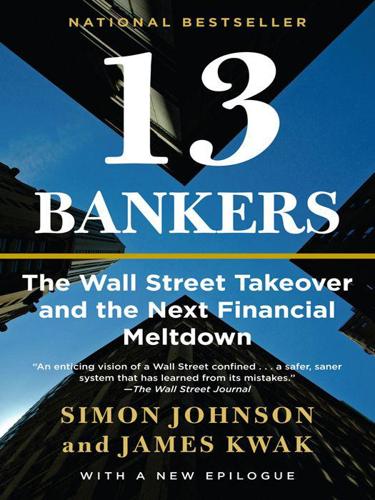
13 Bankers: The Wall Street Takeover and the Next Financial Meltdown
by
Simon Johnson
and
James Kwak
Published 29 Mar 2010
Each of these trades was a customized combination of bonds, swaps, and options that was virtually impossible for a typical client to accurately value; the dealer would charge a large fee, break the transaction into its component parts, and hedge them individually at a much lower cost. Derivatives expert Satyajit Das has outlined the abusive economics of these transactions. Describing the mechanics of a typical inverse floater, he wrote, “Chairman Greenspan might wax lyrical about the unbundling of risks but we spent most of our waking hours frantically rebundling the risks and stuffing them down the throats of any investor we could find.”74 Because these derivatives were zero-sum trades—one party’s loss was the other’s profit—one side could be badly burned.
…
On Brooksley Born, see Rick Schmitt, “Prophet and Loss,” Stanford Magazine, March–April 2009, available at http://www.stanfordalumni.org/news/magazine/2009/marapr/features/ born.html; Manuel Roig-Franzia, “Credit Crisis Cassandra: Brooksley Born’s Unheeded Warning Is a Rueful Echo 10 Years On,” The Washington Post, May 26, 2009, available at http://www.washingtonpost.com/wp-dyn/content/article/2009/05/25/AR2009052502108.html; and “The Warning,” Frontline (PBS television broadcast October 20, 2009), available at http://www.pbs.org/wgbh/pages/frontline/warning/. 10. Frank Partnoy, F.I.A.S.C.O.: Blood in the Water on Wall Street (New York: W. W. Norton, 2009), 59. For another account of the derivatives industry, see Satyajit Das, Traders, Guns and Money: Knowns and Unknowns in the Dazzling World of Derivatives (Harlow, England: Prentice Hall, 2006). 11. Bank for International Settlements, Semi-Annual OTC Derivatives Statistics, available at http://www.bis.org/statistics/derstats.htm. 12. Quoted in Frank Partnoy, Infectious Greed: How Deceit and Risk Corrupted the Financial Markets (New York: Henry Holt, 2004), 163. 13.
…
Losses on mergers and acquisitions arbitrage also contributed to the decision to downsize the proprietary trading operation. 72. Nassim Taleb, Foreword to Pablo Triana, Lecturing Birds on Flying: Can Mathematical Theories Destroy the Financial Markets? (Hoboken, NJ: Wiley, 2009), xiii. 73. Semiannual OTC Derivatives Statistics, supra note 15, at Table 19. 74. Satyajit Das, Traders, Guns and Money: Knowns and Unknowns in the Dazzling World of Derivatives (Harlow, England: Prentice Hall, 2006), 47. For an explanation of a leveraged inverse floater, see ibid. at 45–50. 75. On the transactions that created these losses, see Frank Partnoy, F.I.A.S.C.O.: Blood in the Water on Wall Street (New York: W.

Fool's Gold: How the Bold Dream of a Small Tribe at J.P. Morgan Was Corrupted by Wall Street Greed and Unleashed a Catastrophe
by
Gillian Tett
Published 11 May 2009
Davies, Aline Van Duyn, Francesco Guerrera, Jennifer Hughes, Sam Jones, Michael Mackenzie, David Oakley, Anousha Sakoui, Saskia Scholtes, Henny Sender, Gary Silverman, and Peter Thal-Larsen. Janet Tavakoli, Satyajit Das, and Arturo Cifuentes were some of the few mavericks who were willing to speak openly to FT about the looming credit dangers at an early stage. In various stages of writing, Adam Ridley, Charles Morris, Keith Hart, Henry Fajemirokun, and Satyajit Das read various drafts and offered extremely helpful comments. Henny Sender also offered very kind logistical support. Pascal Spreen, Shannon Gitlin, and Madhavi Pulapaka conducted research.
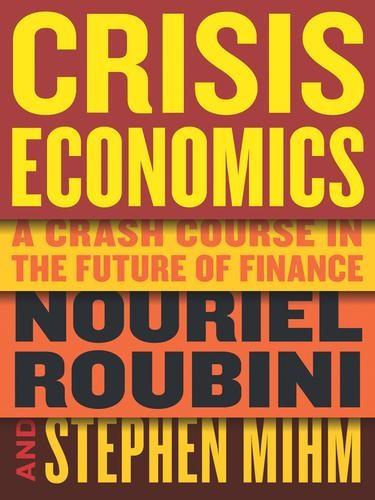
Crisis Economics: A Crash Course in the Future of Finance
by
Nouriel Roubini
and
Stephen Mihm
Published 10 May 2010
Market practitioners, analysts, and other thinkers with whom I’ve had a productive dialogue include Martin Wolf, Steve Roach, David Rosenberg, Mark Zandi, Jim O’Neill, Luis Oganes, Joyce Chang, Lewis Alexander, Don Hanna, Stephen King, Manu Kumar, Jens Nystedt, Robert Kahn, Chris Whalen, Joshua Rosner, Barry Ritholtz, Yves Smith, Wolfgang Munchau, Gillian Tett, Ian Bremmer, Michael Pettis, Steve Drobny, Satyajit Das, Katerina Alexandraki, Daniel Alpert, Charles Morris, Richard Bookstaber, Edward Chancellor, and Walter Molano. Former policy makers and other policy think-tank scholars with whom I’ve interacted include Alex Pollock, Desmond Lachman, Ted Truman, Fred Bergsten, Morris Goldstein, Adam Posen, and Benn Steil.
…
.”: Berkshire Hathaway Annual Report for 2002, p. 13, online at http://www.berkshirehathaway.com/2002ar/2002ar.pdf. 199 Senator Phil Gramm: Eric Lipton and Stephen Labaton, “A Deregulator Looks Back, Unswayed,” New York Times, November 16, 2008. 200 infamous episodes: An excellent overview of their checkered history can be found in Lynn A. Stout, “Why We Need Derivatives Regulation,” New York Times, October 7, 2009, online at http://dealbook.blogs.nytimes.com/2009/10/07/dealbook-dialogue-lynn-stout/; also Satyajit Das, Traders, Guns, and Money: Knowns and Unknowns in the Dazzling World of Derivatives (Upper Saddle River, N.J.: Financial Times Press, 2006). 200 some sensible steps: Some of the following proposals echo those found in Viral A. Acharya et al., “Derivatives: The Ultimate Financial Innovation,” in Acharya and Richardson, eds., Restoring Financial Stability; and Rym Ayadi and Patrick Behr, “On the Necessity to Regulate Credit Derivatives Markets,” Journal of Banking Regulation 10 (2009): 179-201. 204 Basel Committee on Banking Supervision: For basic information on the Basel Committee, see “The New Basel Capital Accord: An Explanatory Note,” Bank for International Settlements, 2001, online at http://www.bis.org/publ/bcbsca01.pdf; see also Bryan J.
…
Chapter 9: Radical Remedies 211 “The lesson I take from this experience . . .”: Ben S. Bernanke, “Monetary Policy and the Housing Bubble,” speech to annual meeting of the American Economic Association, January 3, 2010, http://www.federalreserve.gov/newsevents/speech/bernanke20100103a.pdf. 214 standard industry guide to derivatives: Satyajit Das, The Das Swaps & Financial Derivatives Library (Hoboken, N.J.: John Wiley and Sons, 2006). 215 a bewildering array of regulatory bodies: See Richard H. K. Vietor, “Government Regulation of Business,” in Stanley L. Engerman and Robert E. Gallman, eds., The Cambridge Economic History of the United States (Cambridge, U.K.: Cambridge University Press, 2000), 3:969-1012, particularly the chart on 3:980; also Andreas Busch, Banking Regulation and Globalization (New York: Oxford University Press, 2009), 33-66. 216 beneficial “competition”: See, for example, Richard J.
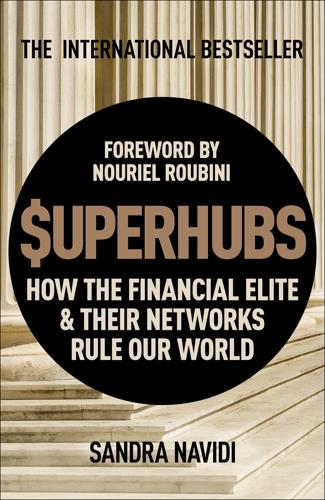
SUPERHUBS: How the Financial Elite and Their Networks Rule Our World
by
Sandra Navidi
Published 24 Jan 2017
According to a McKinsey study, “global debt has grown by $57 trillion . . . outpacing world GDP growth” and “no major economy has decreased its debt-to-GDP ratio since 2007.”3 In the decades preceding the crisis, an increasingly greater share of GDP had been based on financial services, which in turn had been based on credit growth. However, financialization only contributes to growth up to a certain point before this trend reverses.4 As finance takes up an increasingly larger share of GDP, investment in the real economy falls.5 The author and former banker Satyajit Das notes that “[at] its peak, the finance industry generated 40 percent of corporate profits.”6 As a result finance decoupled from the economy, and while Wall Street got richer, everyone else got poorer, thereby increasing the wealth gap. Financialization has also contributed significantly to corporate ownership and control, which has expanded and strengthened elite networks even further.
…
Ôzgûr Orhangazi, “Financialization and Capital Accumulation in the Non-Financial Corporate Sector,” Political Economy Research Institute, University of Massachusetts Amherst, Working Paper Series Number 149, October 2007, http://scholarworks.umass.edu/cgi/viewcontent.cgi?article=1120&context=peri_workingpapers. 6. Satyajit Das, The Age of Stagnation: Why Perpetual Growth Is Unattainable and the Global Economy Is in Peril (New York: Prometheus Books, 2016) 598, Kindle edition. 7. “The American Middle Class Is Losing Ground,” Pew Research Center, December 9, 2015, http://www.pewsocialtrends.org/2015/12/09/the-american-middle-class-is-losing-ground. 8.

This Will Make You Smarter: 150 New Scientific Concepts to Improve Your Thinking
by
John Brockman
Published 14 Feb 2012
Eric Topol Hunting for Root Cause: The Human “Black Box” Each of us is gradually being morphed into an event-data recorder by virtue of our digital identity and presence on the Web. David Rowan Personal Data Mining We need to [mine] our own output to extract patterns that turn our raw personal data stream into predictive, actionable information. Satyajit Das Parallelism in Art and Commerce [Damien] Hirst was the artist of choice for conspicuously consuming hedge-fund managers, who were getting very rich. Laurence C. Smith Innovation In the world of science, innovation stretches the mind to find an explanation when the universe wants to hold on to its secrets just a little longer.
…
Indeed, as the work of Daniel Kahneman, Daniel Gilbert, and Christakis and Fowler demonstrate so powerfully, accurate individual-level data tracking is key to understanding how human happiness can be quantified, how our social networks affect our behavior, how diseases spread through groups. The data is already out there. We just need to encourage people to tap it, share it, and corral it into knowledge. Parallelism in Art and Commerce Satyajit Das Expert, financial derivatives and risk; author, Traders, Guns & Money: Knowns and Unknowns in the Dazzling World of Derivatives and Extreme Money Confluence of factors is highly influential in setting off changes in complex systems. A common example is in risk—the “Swiss cheese” theory.
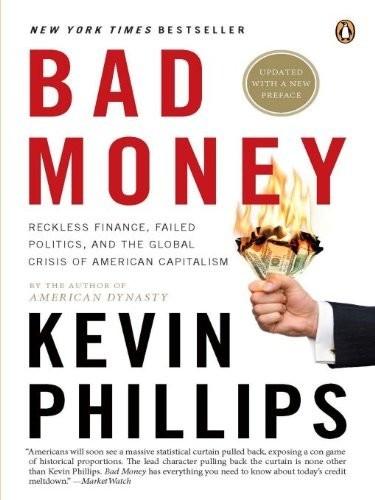
Bad Money: Reckless Finance, Failed Politics, and the Global Crisis of American Capitalism
by
Kevin Phillips
Published 31 Mar 2008
These “market drivers of liquidity,” he argued, “currently exceed influences coming from traditional monetary policy instruments.”18 To David Tice at the Prudent Bear Fund, credit derivatives had enabled “a credit apparatus unlike any in history with endless capacity to create ‘money’-like debt instruments.”19 Derivatives expert Satyajit Das called the new quasi currency “candyfloss money,” explaining that “by the early 2000s, the new liquidity factory had created a money pyramid that had no parallel in history.”20 Bill Gross, from the bond-market viewpoint, made a pointed analogy in his October 2007 Investment Outlook:Remember those old economics textbooks that told you how a $1 deposit at your neighborhood bank could be multiplied by five or six times in a magical act of reserve banking?
…
Andrews, “Fed and Regulators Shrugged as the Subprime Crisis Spread,” New York Times, December 18, 2007. 17 “Credit Turmoil ‘Has Hallmarks of Bank Run,’ ” Financial Times, September 2, 2007. 18 Mohamed El-Erian, “In the New Liquidity Factories, Buyers Must Still Beware,” Financial Times, March 22, 2007. 19 David W. Tice, “Report to Shareholders,” Prudent Bear Funds, Inc., April 30, 2007. 20 Satyajit Das, “Credit Crunch: The New Diet Snack of Financial Markets,” www.prudentbear.com, September 5, 2007. 21 Bill Gross, “What Do They Know?”Investment Outlook, www.pimco.com, October 2007. 22 “Testimony of Robert J. Shiller Before the Joint Economic Committee of Congress,” Washington, D.C., September 19, 2007, pp. 1-2. 23 “The R-Word Surfaces on Wall Street,” Financial Times, September 10, 2007. 24 Ibid. 25 “A New Light on Housing’s Role in U.S.

The Black Box Society: The Secret Algorithms That Control Money and Information
by
Frank Pasquale
Published 17 Nov 2014
Hidden confl icts of interest have long haunted Wall Street fi rms, so it would be foolish to argue that secret algorithms somehow hijacked or corrupted American fi nance.163 But it would also be a mistake to pass over questions concerning technology in finance, because modeling methods and automation have vastly expanded the sector’s capacity to bluff those who are supposed to manage risk and detect deception. As former trader Satyajit Das memorably puts it, “No trader making $1 million + a year is going to take questions from an auditor making $50,000 a year”— especially when the trader has myriad models to prove the wisdom of his position.164 Admittedly, my illustrations are not comprehensive. Some might say that they are unrepresentative, skewed toward go-go years of reckless speculation.
…
For historical accounts of corrupt or confl icted practices, see Galbraith, The Great Crash of 1929; Fred Schwed, Where Are the Customers’ Yachts? (New York: Wiley, 2006); Henwood, Wall Street: How it Works; Robert Kuttner, The Squandering of America: How the Failure of Our Politics Undermines Our Prosperity (2010), 112, 231. 164. Satyajit Das, Traders, Guns and Money: Knowns and Unknowns in the Dazzling World of Derivatives (Great Britain: FT Press, 2006), 144. 165. Daniel Carpenter, Reputation and Power: Organizational Image and Pharmaceutical Regulation at the FDA (Princeton, NJ: Princeton University Press, 2010), 20. 166. Quoted in Brian McKenna, “How Will Gillian Tett Connect with the Natives of the U.S.

Swimming With Sharks: My Journey into the World of the Bankers
by
Joris Luyendijk
Published 14 Sep 2015
But the fundamental conflicts of interest he identified do exist and when I met him again a few times in a sober state his story remained the same. Risk and compliance is disparaged not only by front-office bankers but by most insiders. In Traders, Guns and Money, former middle-office veteran Satyajit Das defines the department as those who ‘keep lists of all documents that need to be shredded in case of a problem’. This is almost the opposite of what the man at the party and others working in internal control functions signed up for. I want to do a good job, they claimed. But my own bank stops me from doing it.

What to Think About Machines That Think: Today's Leading Thinkers on the Age of Machine Intelligence
by
John Brockman
Published 5 Oct 2015
BART KOSKO Thinking Machines = Old Algorithms on Faster Computers JULIA CLARKE The Disadvantages of Metaphor MICHAEL MCCULLOUGH A Universal Basis for Human Dignity HAIM HARARI Thinking About People Who Think Like Machines HANS HALVORSON Metathinking CHRISTINE FINN The Value of Anticipation DIRK HELBING An Ecosystem of Ideas JOHN TOOBY The Iron Law of Intelligence MAXIMILIAN SCHICH Thought-Stealing Machines SATYAJIT DAS Unintended Consequences ROBERT SAPOLSKY It Depends ATHENA VOULOUMANOS Will Machines Do Our Thinking for Us? BRIAN CHRISTIAN Sorry to Bother You BENJAMIN K. BERGEN Moral Machines LAURENCE C. SMITH After the Plug Is Pulled GIULIO BOCCALETTI Monitoring and Managing the Planet IAN BOGOST Panexperientialism AUBREY DE GREY When Is a Minion Not a Minion?
…
As much as having our own ideas, ingenuity will lie in the proper exploration of such ready-made sets of thought. Measuring the cognitive space of all possible thoughts will be as awe-inspiring as astronomy’s exploration of the universe. Maybe Mahler’s potential Sixtieth is as awesome as his Sixth. UNINTENDED CONSEQUENCES SATYAJIT DAS Former banker; author, Extreme Money and Traders, Guns, and Money In his novel Gravity’s Rainbow, Thomas Pynchon identifies the confusion about the subject and object of inquiries: “If they can get you asking the wrong questions, they don’t have to worry about answers.” Thinking about machines that think poses more questions about human beings than about the machines or artificial intelligence.
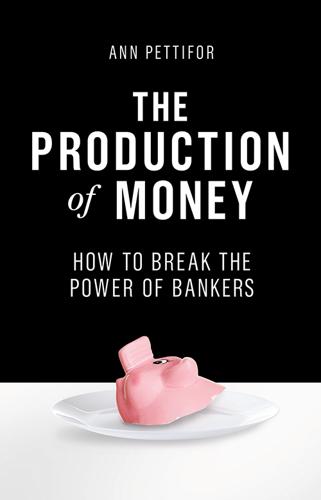
The Production of Money: How to Break the Power of Banks
by
Ann Pettifor
Published 27 Mar 2017
Only then could we hope to manage the challenge of climate change. CHAPTER 1 Credit Power Modern finance is generally incomprehensible to ordinary men and women … The level of comprehension of many bankers and regulators is not significantly higher. It was probably designed that way. Like the wolf in the fairy tale: ‘All the better to fleece you with.’ Satyajit Das, Traders, Guns and Money (2010) Finance must be the servant, and the intelligent servant, of the community and productive industry; not their stupid master. National Executive Committee of the British Labour Party (June 1944), Full Employment and Financial Policy The global finance sector today exercises extraordinary power over society and in particular over governments, industry and labour.
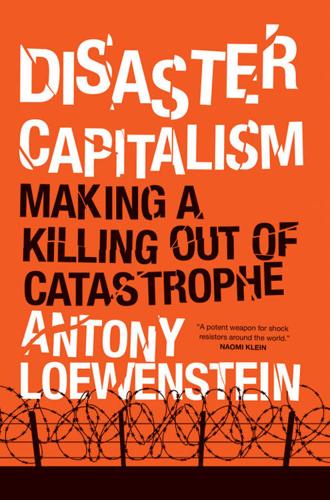
Disaster Capitalism: Making a Killing Out of Catastrophe
by
Antony Loewenstein
Published 1 Sep 2015
I often questioned the usefulness of journalism itself, keenly aware of the limitations of the medium to bring significant changes where they were needed. In particular, I was struck by how often people felt like slaves to an economic system over which they had no control. Financial consultant Satyajit Das writes that “the rule of extreme money is that everybody borrows, everybody saves, everybody is supposed to get wealthier. But only skilled insiders get richer, running and rigging the game.”8 This book uncovers these covert players, exposes their tactics, recognizes the financial, social, and political groups that have created this mess, and makes the case for change.
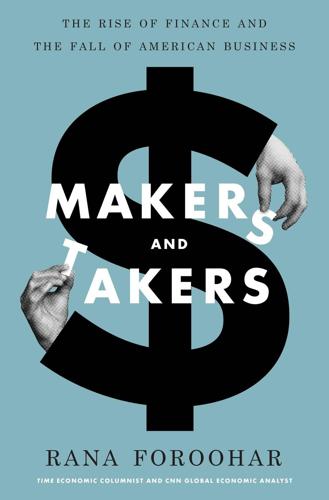
Makers and Takers: The Rise of Finance and the Fall of American Business
by
Rana Foroohar
Published 16 May 2016
See also Ozgur Orhangazi, “Financialisation and Capital Accumulation in the Non-financial Corporate Sector: A Theoretical and Empirical Investigation on the US Economy: 1973–2003,” Cambridge Journal of Economics 38, no. 6 (November 2008); Office of Financial Research; and Mason, “Disgorge the Cash.” 9. Krippner, Capitalizing on Crisis, 3–4, citing Julie Froud et al., Financialization and Strategy: Narrative and Numbers (London: Routledge, 2006). 10. “How Money Got Weird,” Planet Money podcast, NPR, September 30, 2011. See also Satyajit Das, Extreme Money: Masters of the Universe and the Cult of Risk (Upper Saddle River, NJ: FT Press, 2011). 11. Catherine Ngai and Jeffrey Dastin, “U.S. Airlines Confront Cheap Oil’s Flip Side: Costly Hedges,” Reuters, December 23, 2014. 12. Author interview with Buffett for this book. 13. Author interview with Sharma for this book. 14.

Mathematics of the Financial Markets: Financial Instruments and Derivatives Modelling, Valuation and Risk Issues
by
Alain Ruttiens
Published 24 Apr 2013
RUTTIENS, Hurst coefficient, chaos theory and financial markets behavior, Proceedings of the Conference organized by The Technical Analyst, “Automated trading 2009”, London, 10/16/2009. 7 For an in-depth study of this field, see for example the PhD thesis in Applied Sciences of S. DABLEMONT, Forecasting of high frequency financial time series, Louvain University (Belgium), 2008 (available on the web). 8 Quoted by Satyajit DAS, in “Tales of leverage”, RISK, July 2009, pp. 74 and 75. 9 However, irrational expectation is not necessarily problematic, see this short but surprising paper by R. ROLL (one of the authors of the APT model), see Chapter 4, Section 4.3.5, “Rational infinitely lived asset prices must be non-stationary”, Journal of Banking & Finance, vol. 26, no. 6, 2002, pp. 1093–1097. 10 See a good introduction to behavioral finance can be found in M, SEWELL, Behavioural Finance, University of Cambridge, working paper, rev. 2010, which provides a detailed bibliography.

The Blockchain Alternative: Rethinking Macroeconomic Policy and Economic Theory
by
Kariappa Bheemaiah
Published 26 Feb 2017
Many authors and thinkers have heavily influenced the ideas that have been expressed in the book. Although it would be impossible to thank them all, I would like to thank the most influential authors to whom I owe a great intellectual debt. These include Lord Adair Turner, W. Brain Arthur, Doyne Farmer, Andreas Antonopoulos, Satyajit Das, Joyce Appleby, Yanis Varoufakis, Patrick O’Sullivan, Nigel Allington, Mark Esposito, Sitabhra Sinha, Thomas Sowell, Niall Ferguson, Andy Stern, Alan Kirman, Neel Kashkari, Danny Dorling, David Graeber, Amir Sufi, Atif Mian, Vitalik Buterin, Andy Haldane, Gillian Tett, Martin Sandbu, Robert Reich, Kenneth Rogoff, Paul Beaudry, Michael Kumhof, Diane Coyle, Ben Dyson, Dirk Helbing, Guy Michaels, David Autor, Richard Gendal Brown, Tim Swanson, David Andolfatto, Paul Pfleiderer, Zoltan Pozsar, Frank Levy, Richard Murnane, César Hidalgo, and Robin Hanson, among others.
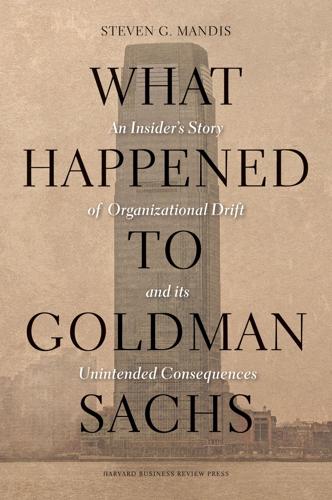
What Happened to Goldman Sachs: An Insider's Story of Organizational Drift and Its Unintended Consequences
by
Steven G. Mandis
Published 9 Sep 2013
“When combined with the toxic ecology of bonus systems that emphasize short-term revenues, banks evolved a transactional business model. Deals and profits dominated at the expense of client interests and longer term relationships, a practice known as ‘scorched earth banking.’” (See S. Das, “Goldman Sachs’ Flawed Model,” The Independent, March 17, 2012, http://www.independent.co.uk/news/business/comment/satyajit-das-goldman-sachs-flawed-model-7575865.html.) 42. A. Garfinkle, “A Conversation with Robert S. Kaplan,” The American Interest, March 15, 2012, http://www.the-american-interest.com/article.cfm?piece=1223. 43. Ibid. 44. S. Gandel, “Goldman Says It Can Profit from Europe’s Bust,” Fortune, May 31, 2012, http://finance.fortune.cnn.com/tag/gary-cohn/. 45.

The Price of Time: The Real Story of Interest
by
Edward Chancellor
Published 15 Aug 2022
Shawn Donnan, ‘“Deaths of despair” Surge among US White Working Class’, Financial Times, 22 March 2017. See also Anne Case and Angus Deaton, Deaths of Despair and the Future of Capitalism (New Haven, Conn., 2020). 108. Wolff, Century of Wealth, p. 680. Wolff blamed the rising death rate on economic insecurity. 109. Satyajit Das, The Age of Stagnation: Why Perpetual Growth is Unattainable and the Global Economy is in Peril (Amherst, NY, 2016), p. 299. 110. Galbraith, Inequality and Instability, p. 290. 111. Wolff, Century of Wealth, p. 38. 112. Yves-André Istel, ‘Behind the Inequality Cloud, Hope May Glimmer’, Financial Times, 1 January 2018.

Them And Us: Politics, Greed And Inequality - Why We Need A Fair Society
by
Will Hutton
Published 30 Sep 2010
Tarullo (2008) Banking on Basel: The Future of International Financial Regulation, Peterson Institute for International Economics. 27 Roy Kreitner (2000) ‘Speculations of Contract, or How Contract Law Stopped Worrying and Learned to Love Risk’, Columbia Law Review 100 (4) (May): 1096–138. See also Thomas Lee Hazen (2009) ‘Filling a Regulatory Gap: It is Time to Regulate Over-the-Counter Derivatives’, University of North Carolina Legal Studies Research Paper No. 1338339. 28 Satyajit Das (2006) Traders, Guns and Money: Knowns and Unknowns in the Dazzling World of Derivatives, Prentice-Hall. 29 Committee on Homeland Security and Governmental Affairs, Permanent Subcommittee on Investigations (2010) ‘Wall Street and the Financial Crisis: The Role of Investment Banks’, at http://hsgac.senate.gov/public/_files/ Financial_Crisis/042710Exhibits.pdf. 30 Joseph Stiglitz, ‘The Insider: What I Learned at the World Economic Crisis’, New Republic, 17 April 2000. 31 David Jones (2000) ‘Emerging Problems with the Basel Capital Accord: Regulatory Capital Arbitrage and Related Issues’, Journal of Banking & Finance 24: 35–58. 32 Roger Lowenstein (2001) When Genius Failed: The Rise and Fall of Long-Term Capital Management, Random House. 33 Allen Berger, Richard Herring and Giorgio Szego (1995) ‘The Role of Capital in Financial Institutions’, Journal of Banking and Finance 19 (3–4): 393–430. 34 Gary Gorton (2010) Slapped by the Invisible Hand: The Panic of 2007, Oxford University Press.
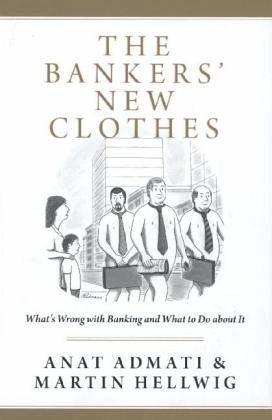
The Bankers' New Clothes: What's Wrong With Banking and What to Do About It
by
Anat Admati
and
Martin Hellwig
Published 15 Feb 2013

Countdown: Our Last, Best Hope for a Future on Earth?
by
Alan Weisman
Published 23 Sep 2013